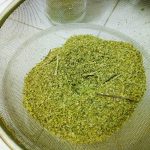Here’s a demonstration on how to use a babyhaler by my son, Derick.
The prevalence of Asthma, a modern-day disease nowadays, is a complex issue that has baffled medical practitioners. Commonly known to be caused by allergens like dusts and pollen, as it turned out, there seems to be other causes for asthma. Only half of the population of asthma patients are actually connected to allergies while the other half is still unknown. Fortunately, for those patients whose asthma is caused by allergens, treatment is available.
For allergen-caused asthma, treatment has become effective and efficient now more than ever. Applied science has definitely done its job. It should be noted though that early treatment plays a significant role, the earlier the treatment the better.
Naturally just like any other parents of asthmatic children, we sought professional help. A Pulmonologist is a doctor specializing in allergies and other diseases affecting the lungs including asthma. A Pulmonologist makes the preliminaries – like tests and a lot of questions about history of family allergies, span of time the child has been having symptoms, medications taken so far, and many others. After the diagnosis, treatment follows.
These are exactly the procedure we followed with our children. Albeit different medicine type, the treatment procedure was similar.
1. Prescription – Flixotide for my daughter and Seretide for my son. Flixotide (orange) inhaler or puffer contains a medicine called fluticasone propionate. This medicine is frequently called “steroids” but not the “anabolic steroids” abused by athletes. This puffer also contain a medicine called “preventer” which prevents asthma attacks. Fluticasone propionate and “preventer” when taken every day or as prescribed by the doctor lessen the swelling and irritation in the walls of the air ways in the lungs and prevents asthma attacks (medsafe.govt.nz). Seretide is a 2-in-1 asthma medication. It contains fluticasone propionate from the orange inhaler and salmeterol xinafoate, a Long-Acting Bronchodilator from Serevent inhaler (green) which keeps the air passage open (seretide.co.nz).
2. Dosage. Two puffs a day, one in the morning and another in the evening every day, non-stop for 6 months. If in case you missed a day or two, you would have to re-set the counting, and start anew. If within 6 months there are no asthma attacks, the doctor may lower it to once a day for another three months. In case of asthma episodes within these months, the doctor would tell you to continue with two puffs a day for another two to three months or until there are no more asthma attacks before lowering the number of puffs.
3. BabyHALER is a trademark of the GlaxoSmithKline group of companies. It is a device that helps babies and toddlers take inhaled medicine in this case the Flixotide and Seretide inhalers. To get acquainted with the parts of a babyhaler please head to parts of a babyhaler.
I hope you find this helpful and please share to those parents with asthmatic children.









